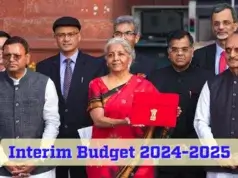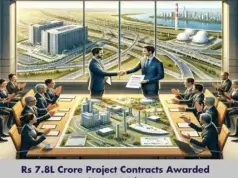 India is expected to emerge as the world’s third-largest construction market by 2020. Fuelling this growth will be large infrastructure investment and growing urbanisation, says Shipra Goel, General Manager – Projects, B.L. Kashyap & Sons Ltd.
India is expected to emerge as the world’s third-largest construction market by 2020. Fuelling this growth will be large infrastructure investment and growing urbanisation, says Shipra Goel, General Manager – Projects, B.L. Kashyap & Sons Ltd.
In the past 15 years, the Indian economy has grown at a fast clip averaging a GDP growth of 8-10 per cent per annum. This has resulted in government putting much greater focus on infrastructure development to support high GDP growth and also attract private and foreign investment. Further, the government, on its part, has set the huge target of doubling investment in infrastructure from Rs.20.5 trillion to Rs.40.9 trillion during the 12th Plan period.
The construction industry is the main driver of the country’s infrastructure development, which is a key engine of economic growth. Additionally, the construction industry creates an annual asset base of $80 billion and generates employment for more than 40 million people. By 2020, India is expected to emerge as the world’s third-largest construction market. Large infrastructure investments and growing urbanisation will fuel this growth.
Liberal government policies and strategies are helping in burgeoning of infrastructure construction through PPP (public-private partnership) and BOOT (build-own-operate-transfer) projects. Government has allocated huge amount to JNNURM (Jawaharlal Nehru National Urban Renewal Mission) and UIDSSMT (Urban Infrastructure Development Scheme for Small Scale and Medium Towns) to lift construction activities in towns and cities throughout the country. The Indian government has introduced significant policy reforms to augment FDI inflows. Foreign construction companies are constantly looking out for opportunities to enter India for business. Local companies are happy to partner with foreign players to share latest technology expertise and more extensive experiences.
Big budget infrastructure projects are becoming popular nowadays in the Indian construction market. One such example is Indira Gandhi International Airport aimed at handling 100 million passengers. Such airports are getting constructed in major metropolitan cities and many medium size airports will start in different cities in country.
Infrastructure
India’s largest highway project known as the Golden Quadrilateral, connecting Delhi-Mumbai-Chennai Kolkata and costing Rs.5,400, is nearing completion. India is targeting construction of highways at the rate of 20 km per day or more. Use of modern construction techniques in highway construction really got a fillip with the World bank-aided four laning projects such as Delhi-Jalandhar NH-1 highway which was taken up in mid-1990’s and subsequently the construction of tolled Mumbai-Pune cemented expressway.
Highway development got a further fillip with the NHDP project launched in early 2000’s. The programme envisages upgrading or strengthening of around 54,000 km of national highways in several phases with an investment of around Rs.3,000 billion. An estimated 16,000 km of four and six-lane national highways have been constructed and another 25,000 km of highways are under construction in form of elevated roads, expressways and highways. Few elevated roads are operational in major cities in the country.
 The technological evolution in rail construction in the country really took shape from Konkan Railway. The stretch of 740 km comprised a total of over 2,000 bridges and 91 tunnels built through this mountainous terrain containing many rivers. The project was the biggest and perhaps most difficult railway undertaking during the last century.
The technological evolution in rail construction in the country really took shape from Konkan Railway. The stretch of 740 km comprised a total of over 2,000 bridges and 91 tunnels built through this mountainous terrain containing many rivers. The project was the biggest and perhaps most difficult railway undertaking during the last century.
To enable quicker construction, several innovative practices were adopted. Piers for major bridges were cast on the riverbanks itself and launched using cranes mounted on pontoons. The technique of incremental launching of bridge spans was used for the first time in India. Since it would take too long to complete the project using locally available tunnelling technology, nine hydraulic tunnelling machines were imported in order to bore through the hard rock of the Sahayadris. The biggest challenge, however, came from the nine tunnels that had to be bored through soft soil. No technology existed anywhere in the world for this purpose and the work had to be carried out through a painstakingly slow manual process.
The experience from Konkan Railway was reapplied in an urban setting and in densely populated areas, for the construction of Delhi Metro. The network consists of six lines with a total length of 190 km with 142 stations of which 35 are underground, five are at-grade, and the remainder is elevated. First phase of project was completed on budget and three years ahead of schedule. This was nothing less than a miracle in construction. Similar metros are now being constructed in all the major cities in the country.
Indian Railways is now constructing the Jammu-Udhampur-Srinagar-Baramulla railway link of 345 km. The route includes many bridges, viaducts and tunnels. The railway is expected to cross a total of over 750 bridges and pass through over 100 km of tunnels, the longest of which is 11 km in length. The greatest engineering challenges involve the crossing of the Chenab river, which involves building a 1,315m long bridge 359m above the river bed, and the crossing of the Anji Khad, which involves building a 657m long bridge 186m above the river bed. The Chenab bridge will be the highest railway structure of its kind in the world, 35m higher than the tip of the Eiffel Tower in Paris.
Real Estate
Indian real estate has brought innovative projects to the Indian subcontinent by constructing skyscrapers. High valued and luxurious housing using world-class finishing is available in all major cities of country. Real estate is not only providing tall towers but also helping in creating prerequisite infrastructure in the vicinity of the housing, leading to overall development and facelift of the areas.
There is a revolution in Indian construction industry to meet demand of high budget fast track projects. This is leading to a spate of mergers and acquisitions among Indian and foreign construction industries. These fast track projects are giving boost to allied construction companies viz. bricks, steel, labour, cement and coal. There is continuous in-flow of new technologies in terms of design and development and construction of projects. Availability of construction equipment, shuttering material etc., to execute typical projects in Indian subcontinent is no longer seen as a bottleneck. Foreign companies producing machinery and other material with latest technology are streamlining the purchase and import processes.
Extensive and advanced construction is seen in roads and railways, airports and seaports, viaducts and underground passages, bridges and culverts, dams and barrages, and elevated corridors. Existing roads, bridges, railway lines and airports are already catering to their full capacity. Therefore, expansion of existing infrastructure and building new amenities is requirement of the day. Innovative and world-class infrastructure development is seen all over India.











